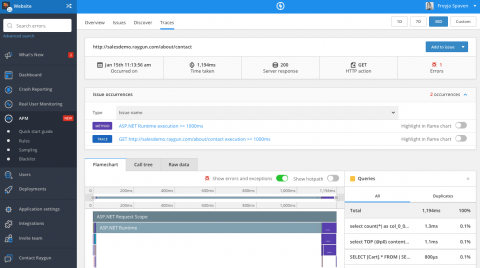Operations | Monitoring | ITSM | DevOps | Cloud
Latest News
Lambda Deployment Frameworks Compared
With AWS Lambda, deploying a new version of our application has never been simpler. However, we still need to take care of some underlying plumbing. Such as managing the configuration for our functions as well as other related resources such as API Gateway, CloudWatch log groups and IAM policies. Depending on the event sources you would like to use, you also need to provision the necessary EventSourceMapping in order to use Lambda with the likes of Kinesis Streams and SQS.
When to use Lambda layers
AWS introduced Lambda Layers at re:invent 2018 as a way to share code and data between functions within and across different accounts. It’s a useful tool and something many AWS customers have been asking for. However, since we already have numerous ways of sharing code, including package managers such as NPM, when should we use Layers instead?
How to handle AWS Lambda cold starts
Smarter people than myself, once said that you should do things you don’t like first so that you can enjoy the things you’re doing later. Nobody wants cold starts. They’re annoying, and we continuously feel an itching sensation in our brains because of them. The serverless world would be a much better place to work in if they weren’t there.
Injection Attacks: Protecting Your Serverless Functions
While trying to verify the claims made on a somewhat facile rundown of serverless security threats, I ran across Jeremy Daly’s excellent writeup of a single vulnerability type in serverless, itself inspired by a fantastic talk from Ory Segal on vulnerabilities in serverless apps. At first I wanted to describe how injection attacks can happen. But the fact is, the two resources I just shared serve as amazing documentation; Ory found examples of these vulnerabilities in active GitHub repos!
Cloud-Side Development For All with Stackery's Free Tier
Today, I’m thrilled to announce our new free tier and pricing model for teams adopting modern serverless application development. I believe cloud-side development is the future and I want everyone to experience it at their own pace. We also now offer a model that can scale with either teams or workflows depending on how aggressively you decide to adopt cloud-side development.
Five worthy reads: The business benefits of serverless computing
Five worthy reads is a regular column on five noteworthy items we’ve discovered while researching trending and timeless topics. This week, we explore serverless computing and how it can impact business operations.
Dashbird product update - February 2019
Mikk and the rest of the dev team at Dashbird have been working overtime this past month, in an effort to rehaul the user experience in the app based on the feedback we are constantly getting. We believe in having an honest and open, two-way street when it comes to communication so I advise each and every one of you to either write us an email via support@dashbird.io or to join our slack channel.
Lambda@Edge: Why Less is More
Lambda@Edge is a compute service that allows you to write JavaScript code that executes in any of the 150+ AWS edge locations making up the Amazon CloudFront content delivery network (CDN) service. In this post, I’ll provide some background on CDN technologies. I will also build out an application stack that serves country-specific content depending on where the user request originates from.
Getting down and dirty with metric-based alerting for AWS Lambda
The phrase “better safe than sorry” gets thrown around whenever people talk about monitoring or getting observability into your AWS resources but the truth is that you can’t sit around and wait until a problem arises, you need to proactively look for opportunities to improve your application in order to stay one step ahead of the competition.







